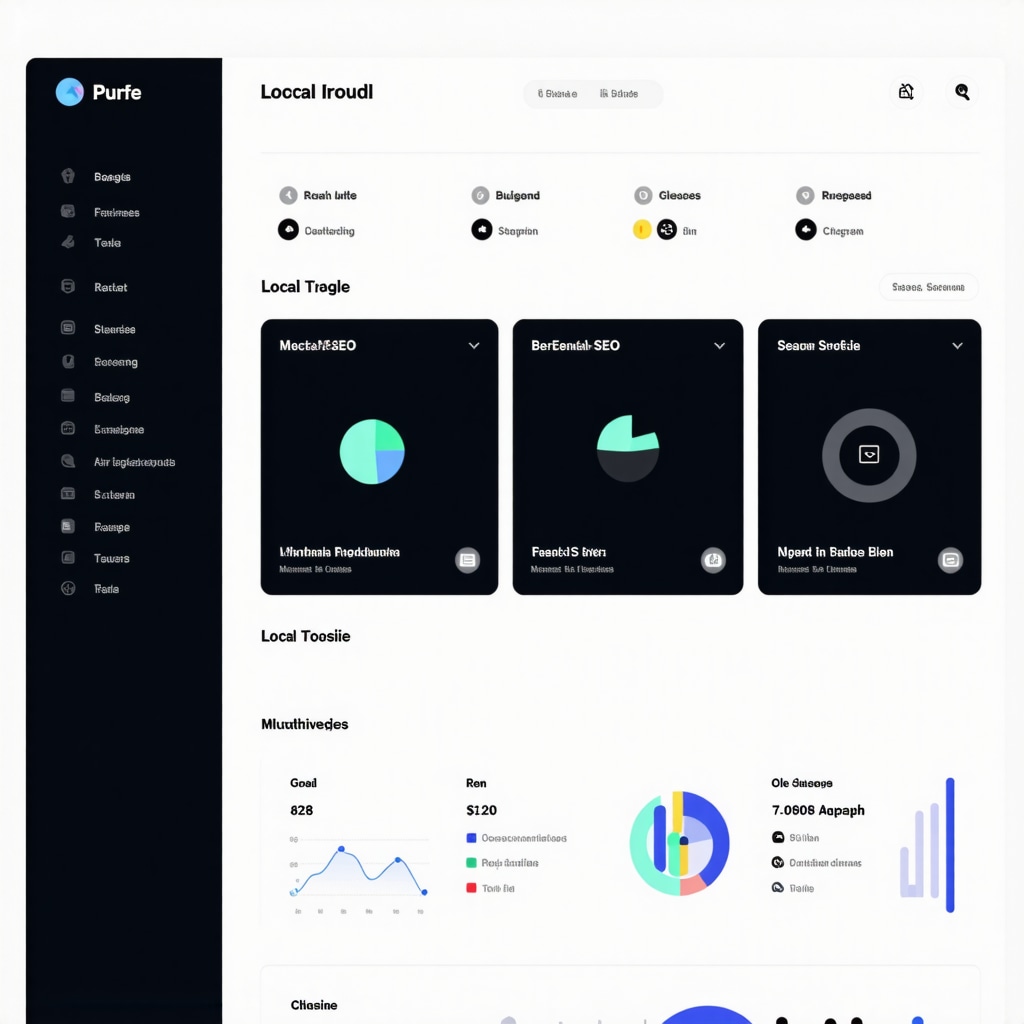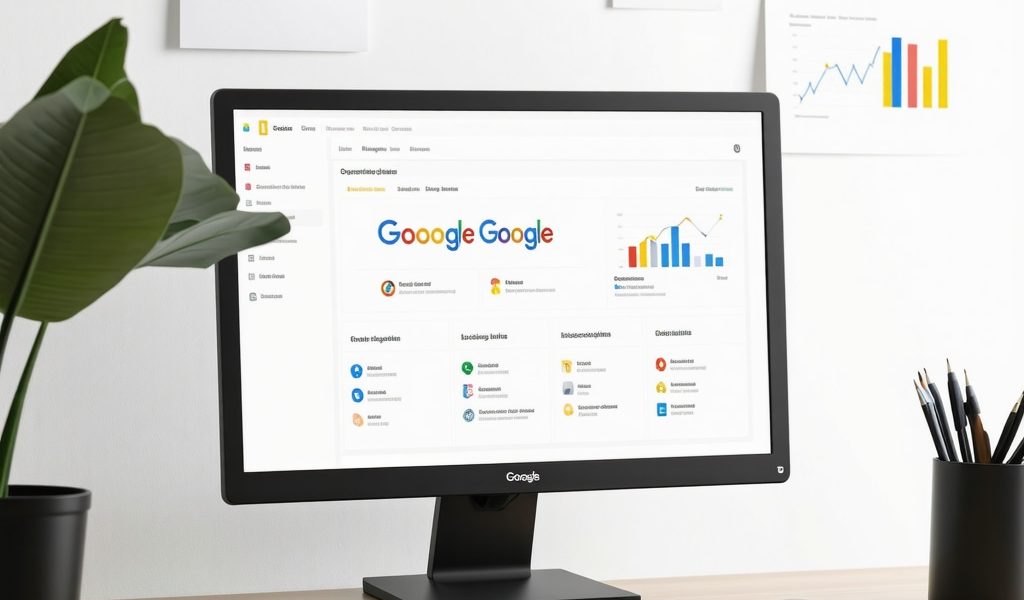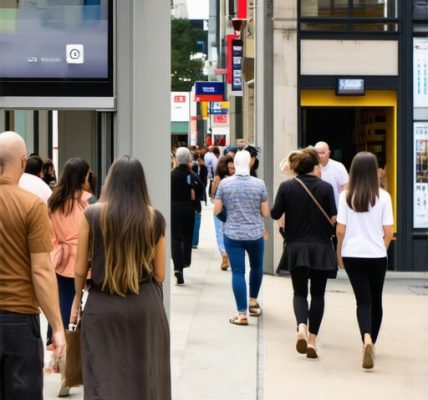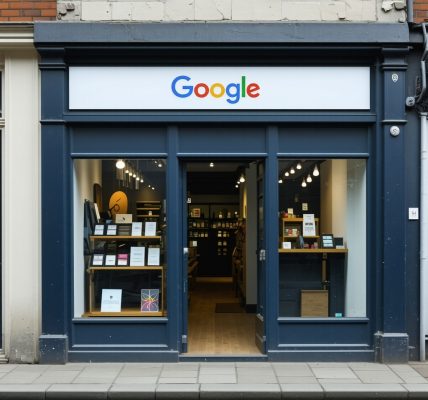Unlocking the Power of Google Business Descriptions for Local SEO Mastery in 2025
In the rapidly evolving landscape of local SEO, Google Business Profile (GBP) optimization remains a cornerstone for businesses seeking visibility and credibility. As expert practitioners recognize, crafting an effective business description is not merely about keyword stuffing but involves a nuanced understanding of semantic relevance, user intent, and Google’s evolving algorithms. This article delves into sophisticated practices for optimizing your Google Business description in 2025, ensuring your local business dominates the coveted Google 3-Pack.
Decoding the Semantic Layers of Google Business Descriptions: Beyond Keywords
In 2025, Google’s AI-driven algorithms analyze context and intent with unprecedented accuracy. Therefore, an optimal GBP description must integrate semantic SEO principles, weaving in latent semantic indexing (LSI) keywords that naturally align with your core offerings. For instance, a local bakery should incorporate related terms like “artisan bread,” “gluten-free options,” and “custom cakes” within a compelling narrative that resonates with user queries. This approach enhances relevance and boosts the profile’s ranking potential, as supported by recent white papers on semantic search evolution (Moz’s analysis of semantic search).
Balancing Keyword Integration with User-Centric Content
Effective descriptions in 2025 transcend keyword inclusion; they articulate a unique value proposition that addresses customer needs and pain points. An expert’s focus is on narrative clarity, trust-building elements, and local context. For example, emphasizing community involvement or specialized services tailored to local demographics can differentiate your profile amidst fierce competition. Additionally, integrating structured data schemas can further enhance visibility, aligning with Google’s preference for well-structured content.
How to Craft a Conversion-Optimized Business Description?
Beyond SEO, your description must serve as a persuasive call to action, guiding potential customers towards engagement. Incorporate clarity, concise benefits, and a hint of brand personality. For example, “Serving the Downtown Area with Fresh, Organic Produce and Personalized Customer Service—Visit Us Today for a Healthier Lifestyle.” This combines local relevance with a compelling offer, increasing click-through and conversion rates.
What Are the Common Pitfalls in Google Business Description Optimization That Experts Should Avoid?
Common mistakes include keyword stuffing, neglecting the character limit (750 characters), and ignoring recent algorithm updates that prioritize user experience and relevance. Also, failing to update descriptions regularly can lead to outdated information, diminishing credibility. Staying informed through authoritative sources such as Google’s official Google Places API documentation is essential for ongoing best practices.
For further insights into elevating your local SEO game, explore best practices for GMB business descriptions in 2025. Engage with other industry experts and share your experiences to refine your strategies continually.
Harnessing AI and User Intent: The Next Frontier in GBP Descriptions
As artificial intelligence continues to refine Google’s understanding of user intent, crafting your Google Business Profile (GBP) description demands a strategic integration of AI-driven insights. Instead of solely optimizing for keywords, consider leveraging data analytics and user behavior patterns to personalize your description dynamically. For example, analyzing local search queries can reveal emerging trends, enabling you to tailor your content proactively. This approach aligns with recent studies on AI in SEO (Search Engine Land’s analysis of AI in SEO), emphasizing the importance of semantic relevance and user-centric content.
Implementing Structured Data for Enhanced Local Visibility
Structured data schemas, such as Schema.org markup, play a crucial role in elevating your GBP’s visibility in local search results. By embedding schema markup related to your business type, services, and customer reviews, you provide search engines with explicit context, improving your chances to appear in rich snippets and local packs. For instance, marking up your service offerings with Service schema can help Google better understand your core competencies, leading to improved ranking signals. To master this, consult comprehensive guides like this resource on local listing optimization.
Are Your GBP Descriptions Truly Engaging and Persuasive?
Beyond technical optimization, the art of persuasive storytelling remains vital. A compelling description should evoke trust, highlight unique selling propositions, and include a clear call-to-action. For example, emphasizing your commitment to community service or eco-friendly practices can resonate with local consumers, fostering loyalty and engagement. Remember, a well-crafted narrative not only improves SEO but also converts views into tangible customer actions. Incorporate storytelling techniques that evoke emotion and foster connection, which are proven to enhance engagement metrics.
What Are the Hidden Opportunities in Google Business Profile Optimization That Experts Overlook?
Many businesses focus narrowly on reviews and NAP consistency, overlooking the power of visual content and local keywords embedded in posts and updates. Regularly updating your GBP with fresh photos, videos, and timely offers can significantly boost visibility and user interaction. Additionally, leveraging Google My Business posts to share news or promotions enhances your profile’s relevance, especially when combined with targeted local keywords. For a comprehensive approach, explore this expert guide on GMB SEO strategies.
Engage with our community—share your success stories or ask questions in the comments to deepen your understanding of local SEO mastery. For more in-depth tactics, consider reading the full article on GMB SEO tools and techniques.
Leveraging NLP and AI Insights to Refine Your Google Business Description
As we navigate the complexities of 2025’s local SEO landscape, the role of natural language processing (NLP) and artificial intelligence (AI) in crafting compelling GBP descriptions cannot be overstated. Modern AI tools enable businesses to analyze vast amounts of search query data, extracting nuanced user intent patterns that inform more precise and engaging descriptions. For example, integrating AI-driven keyword clustering can help identify latent semantic groups, allowing for more naturally integrated keywords that resonate with both users and search algorithms. According to a recent study by BrightEdge, AI-powered content optimization significantly improves relevance and engagement metrics (BrightEdge AI and SEO insights).
The Art of Dynamic Content Customization Based on Local Search Trends
Beyond static descriptions, advanced local SEO practitioners are pioneering dynamic content strategies that adapt based on real-time search trend analysis. By utilizing tools like Google Trends combined with local search analytics, businesses can tailor their GBP descriptions to highlight trending keywords and services. This proactive approach ensures relevance and increases the likelihood of appearing in newly emerging local searches. For instance, a restaurant might emphasize new menu items based on seasonal or trending ingredients identified through trend analysis, thus aligning their profile with current customer interests.
How can businesses effectively integrate structured data schemas to enhance local search visibility without risking over-optimization?
Integrating structured data schemas such as Schema.org markup is essential, yet it requires a delicate balance. Over-optimization can lead to search engine penalties, while underutilization can leave valuable ranking opportunities on the table. Best practices involve using schema to explicitly categorize your business type, services, and customer reviews while maintaining a natural, user-focused narrative. For example, embedding LocalBusiness or Store schema with detailed service offerings and accurate contact information not only boosts visibility but also ensures compliance with Google’s quality guidelines. A comprehensive guide by Moz details schema implementation strategies that avoid pitfalls and maximize benefits (Moz schema markup guide).
Uncovering Hidden Opportunities in Local SEO: Beyond the Obvious
One often overlooked aspect is the strategic use of user-generated content and community engagement signals. Regularly updating your GBP with authentic customer reviews, photos, and local news posts creates a rich, dynamic profile that search engines interpret as highly relevant. Moreover, leveraging local events or partnerships in your posts can strengthen local signals and foster community trust. For example, a local gym could feature success stories or upcoming health fairs, making their profile a hub of community activity and relevance.
Another sophisticated tactic involves integrating voice search optimization into your GBP strategy. As voice searches become increasingly prevalent, tailoring descriptions to answer conversational queries—such as “Where can I find a reliable plumber near me?”—can dramatically improve local pack visibility. This requires a nuanced understanding of natural language patterns and incorporating question-based keywords seamlessly into your description.
Enhancing User Engagement Through Rich Media and Interactive Content
In 2025, static descriptions are no longer sufficient to stand out. Embedding rich media—such as 360-degree virtual tours, product videos, or interactive service showcases—can significantly elevate user engagement metrics. Google’s algorithms prioritize profiles that provide comprehensive, multimedia-rich information, which directly correlates with higher click-through rates and conversions. For example, a boutique hotel might include a virtual walkthrough of their rooms, amenities, and local attractions, enticing potential guests to choose their property over competitors.

To capitalize on this trend, consider integrating multimedia content into your GBP regularly, and monitor engagement metrics to refine your approach continually. For more about leveraging multimedia for local SEO, explore authoritative resources like Moz’s guide on local listing enhancements.
Unlocking the Hidden Potential of Local Search Signals with Dynamic GBP Descriptions
As the digital landscape continues to evolve, one of the most impactful yet underutilized tactics involves leveraging real-time local search data to adapt your Google Business Profile (GBP) descriptions dynamically. By integrating APIs from Google Trends and local analytics platforms, businesses can craft highly relevant, seasonal, or trending content that aligns perfectly with current consumer interests. This proactive approach not only increases visibility but also demonstrates a commitment to customer needs, fostering trust and loyalty. Consider deploying automated content management systems that adjust your GBP narrative based on trending keywords, thereby maintaining relevance in a competitive market.
The Intersection of NLP and Local Keyword Optimization: A Quantum Leap in Relevance
Natural Language Processing (NLP) technologies have reached a level where they can dissect user intent with remarkable precision, enabling businesses to fine-tune their GBP descriptions for conversational and long-tail search queries. Employing tools that analyze large datasets of local search queries allows for the extraction of nuanced semantic clusters, which can be seamlessly integrated into your description. This approach ensures your profile is primed for voice search and natural language questions, significantly boosting your chances of appearing in featured snippets and local packs. For instance, integrating NLP insights can help you craft descriptions that answer questions like, “Where can I find eco-friendly coffee shops near me?” with natural fluency and relevance. (Source: Moz’s comprehensive guide on NLP in SEO)
How Can Structured Data Schemas Be Used to Maximize Local SEO Impact Without Over-Optimization?
Structured data schemas, when implemented thoughtfully, serve as a bridge between your GBP content and search engine understanding, amplifying your local SEO efforts. The key lies in balancing schema richness with natural language, avoiding keyword stuffing or excessive markup that could trigger penalties. For example, utilizing LocalBusiness and Service schemas to explicitly highlight your offerings, hours, and reviews creates a layered contextual signal for Google. Advanced practitioners also incorporate schema for events, products, or special offers, which can trigger rich snippets and enhance visibility in local search results. To master this, consult authoritative guidelines such as Google’s official structured data documentation for best practices and compliance.
Engage Your Audience with Interactive and Multimedia Content Embedded in GBP
In 2025, static descriptions are insufficient to captivate your local audience. Embedding rich media—such as 360° virtual tours, high-resolution images, or interactive service demos—can dramatically improve engagement metrics and signal relevance to Google’s algorithms. This multimedia approach transforms your GBP from a simple listing into an immersive experience, prompting users to spend more time and increasing the likelihood of conversions. For example, a real estate agency could include a virtual walkthrough of properties, enticing prospective buyers with an authentic preview. Regularly updating these assets keeps your profile fresh and competitive, fostering a sense of ongoing engagement. For guidance on multimedia integration, refer to Moz’s insights on visual SEO.
Expert Insights & Advanced Considerations
1. Embrace Semantic SEO for Enhanced Relevance
In 2025, leveraging semantic SEO principles allows for more natural integration of LSI keywords, aligning your business description with evolving AI understanding and user intent, thereby boosting local visibility.
2. Prioritize User-Centric Narratives Over Keyword Stuffing
Craft compelling stories that highlight your unique value propositions and community involvement, enhancing trust and engagement while maintaining compliance with Google’s content guidelines.
3. Utilize Structured Data Schemas Thoughtfully
Implement schema markup such as LocalBusiness and Service schemas to provide explicit context without risking over-optimization, improving rich snippet visibility.
4. Incorporate Rich Media for Higher Engagement
Embed virtual tours, high-resolution images, and videos to create an immersive profile experience, elevating user interaction and signaling relevance to search algorithms.
5. Leverage AI and Real-Time Data for Dynamic Content
Use AI-driven insights and local search trend analytics to adapt descriptions proactively, ensuring your GBP remains pertinent amidst changing consumer interests.
Curated Expert Resources
- Google’s Official Structured Data Documentation: Essential guidelines for schema implementation aligning with best practices.
- Moz’s Schema Markup Guide: In-depth strategies to effectively utilize schema without over-optimization.
- BrightEdge’s AI and SEO Insights: Cutting-edge research on AI’s role in content relevance and engagement.
- Moz’s Visual Content SEO: Techniques for integrating multimedia to enhance local profiles.
- Search Engine Land’s AI in SEO Analysis: An overview of AI-driven trends shaping local search optimization.
Final Expert Perspective
Mastering Google Business Profile optimization in 2025 demands a sophisticated blend of semantic relevance, user-centric storytelling, structured data mastery, and dynamic content strategies. As seasoned professionals, our advice is to continually refine your approach with authoritative insights and innovative tools, ensuring your local SEO efforts not only meet but exceed the evolving standards of search algorithms. For those committed to excellence, engaging with advanced resources and sharing your expertise can lead to sustainable growth and dominance in your local markets. To deepen your understanding, explore more about comprehensive local SEO strategies and stay ahead in this competitive landscape.



